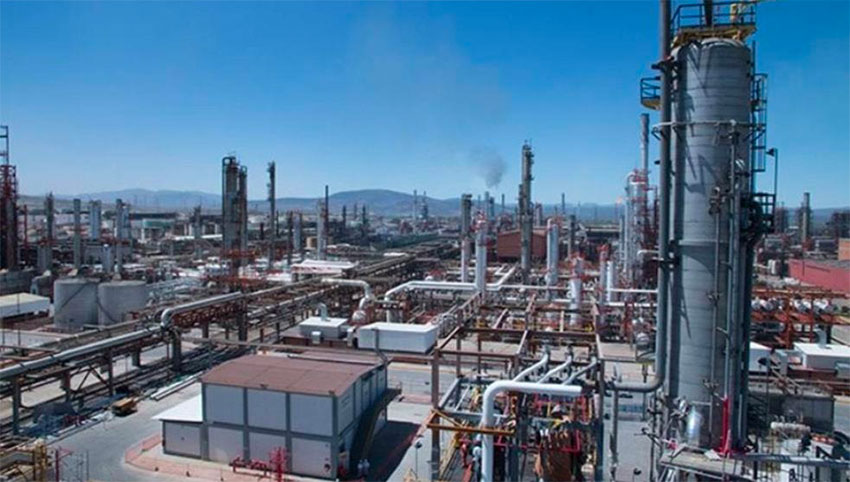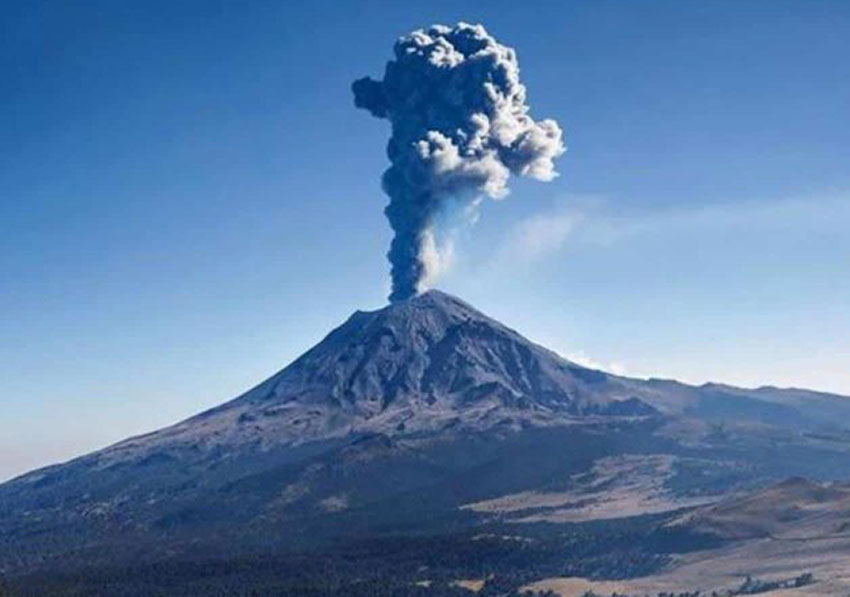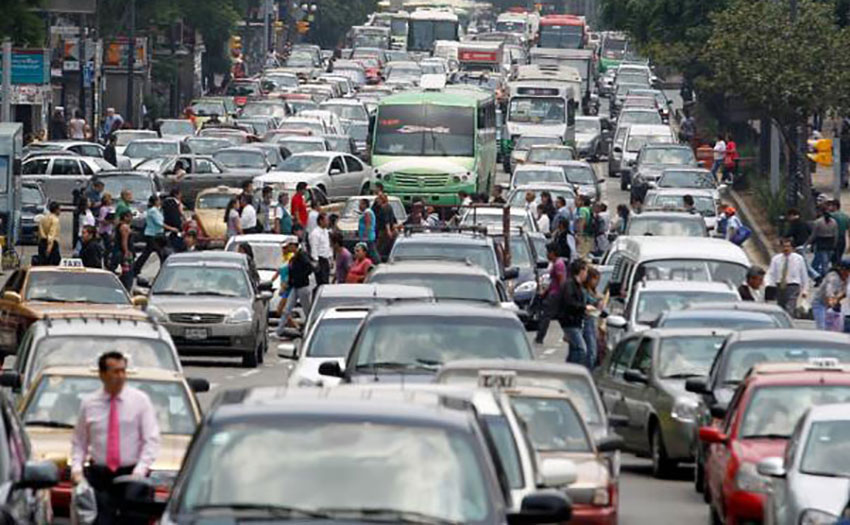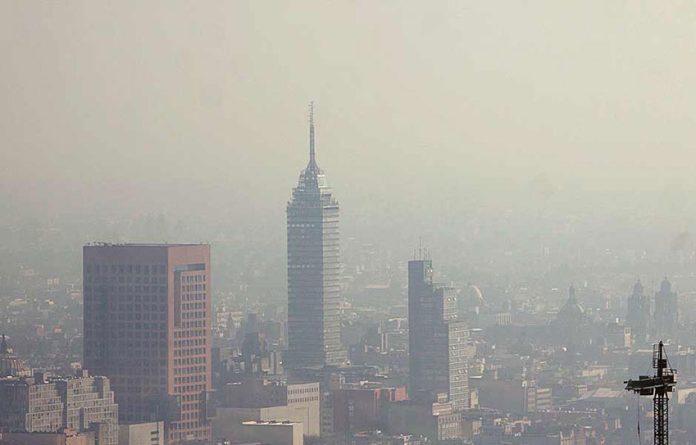As Mexico City residents struggle to breathe in the polluted air of Mexico’s capital, it seems appropriate to blame the government, blame the policies, and blame the traffic. But the complexity of the pollution problem in the Valley of México goes much deeper than we realize, a fact that has become exceedingly clear during the coronavirus pandemic.
After Mexico City’s Covid quarantine began on March 23, Mayor Claudia Sheinbaum followed up by announcing serious restrictions on transit. This included a strict enforcement of the “Hoy No Circula” (no-drive days) program which requires vehicles with certain license plate numbers to remain off the streets on certain days of the week.
The results of restrictions, quarantine, and the shutting down of local offices and industries meant an over 60% reduction in vehicular traffic during the pandemic. Yet the pollution levels in most parts of the city remained at or exceeded the limits of what the World Health Organization considers safe for air quality.
Our 20 million-plus population and the almost 10 million vehicles on the road in the metropolitan area are not an extenuating issue. The pollution caused by transportation in the city is a very real part of its issue and a 60% decrease would suggest quite a dent in the problem. But the truth is that the air in Mexico City is much more complicated than cars on the road.
National Autonomous University researcher Giovanni Carabali has been studying pollution levels in the Mexico City metro area for the past six years. He regularly makes his way up to a meteorological station on the Popocatépetl volcano – one of the highest stations of its kind on Earth – to take samples of the clouds and observe how the pollution of the city is affecting the local atmosphere.

According to Carabali, the biggest pollution problem is, not surprisingly, us. Human activity has the greatest impact on pollution in the valley, but some of its most powerful manifestations might surprise you.
“Spring is the time of the year when there are the most forest fires,” says Carabali, “radiation from the sun is at its highest and because the yearly rains haven’t started yet, fields and forests are all dangerously dry.”
Spring equinox, besides bringing worshippers to the top of the Pyramid of the Sun, is significant to local farmers as a time of rebirth, a time to plant. For many this involves slash-and-burn agriculture, which is believed by the farmers to clean their land and replenish its nutrients. While the long-term effects of such a practice are hotly debated, the short-term benefits are counter-balanced by the massive amounts of carcinogenic soot, carbon dioxide, and volatile organic compounds released into the air.
One study posits that the fires make up 25% of the CO2 and 79-91% of the fine mass particles in the metropolitan air. Some of those farming fires jump their boundaries to burn nearby land. A simple cigarette or unsupervised campfire can start a blaze in the tinderbox forests. Carabali says that fires as far away as the Yucatán peninsula send particles into the air that settle over the Mexico City skyline.
Atmospheric winds bring pollutants from other places too. A hundred miles from the heart of the capital is the city of Tula, famous for its archaeological ruins and one of the largest and most important oil refineries in the country. Owned by the national oil company Pemex, the refinery hasn’t stopped running despite quarantine, and is one of the area’s biggest polluters.
“When you drive into Tula you can smell the sulfur in the air,” says Carabali. “Now they are finding those same sulfate particles in the air above the city.”

Refineries like the one in Tula as well as electricity production in Salamanca and the factories in Lerma near Toluca, are just a few examples of how big industry ensures that the pollution levels stay high, no matter if there are fewer cars on the road.
We also have a natural polluter in our midst, one that was here long before millions of people filled this valley. Popocatépetl, just an hour outside the city limits, is considered one of the most active and most dangerous volcanoes in the world due to the number of people that live in and around its base that would be affected if it were to erupt. Part of the infamous “Ring of Fire” that circles the Pacific Ocean, this volcano is the one of the largest emitters of sulfur dioxide and volcanic ash in the world.
“Even on the days you can’t see smoke rising from its crater, it’s still emitting gases into the atmosphere,” says Carabali.
Mexico City’s geography spins each of these separate sources of pollution into a particularly toxic mix. As Carabali explains, it’s as if the city is sitting in the bottom of a cooking pot. Surrounded by high-elevation mountains the wind inside the pot simply moves around (in fact much of the pollution in the city is produced in the north and migrates to the south) and without much of an exit, it settles further into the bottom of the valley, choking the population.
The valley’s ancient bodies of water would help if they were still around. The lakes and marshes that used to exist here reduced the aridity of the area, minimalizing dust particles in the air and inhibiting many of the chemical reactions caused by aerosols in the atmosphere. The loss of these bodies of water has meant that their natural carbon-sequestering cycles are gone too.
The water remaining in the city’s southern canal system has high levels of bacteria, heavy metals and harmful microbes. Refugio Rodríguez, a local specialist in biotechnology, says studies show that 30% of the methane in the city’s atmosphere is produced by the canals themselves.

Carabali insists part of the problem is that we have to think of the valley in broader terms than we do now.
“If you take a helicopter over the valley you’ll see that geographically it includes much more than just the city. There are parts of the México state, parts of Puebla, Tlaxcala that are all contained within our atmospheric border, which doesn’t respect our political borders at all.”
That means that the complicated and disjointed mix of anti-pollution measures taken in each city affects the overall air quality of the whole.
The Environmental Commission of the Megalopolis, created in 2013, was designed to unify the political administrations of the valley in hopes of improving the poor air quality, but despite its seven-year history, May 2019 was one of the worst months of pollution and visibility in the city’s history. Last December the commission announced 14 new measures it planned to implement to help mitigate the return of those kinds of pollution levels but most of the activities and planned site visits have been canceled due to the pandemic.
The Mexico City government has often been the leader in mitigation of pollution – the result of left-leaning administrations and a population slightly more climate conscientious than other areas of the country – but its efforts have not done nearly enough to deal with the problem.
The unique geographical and political circumstances we find ourselves in indicate a holistic solution to the problem is necessary, crafting measures that go beyond our city borders and political parties.
While reducing traffic is vital for the health of residents and our air, it’s simply not enough, as the pandemic has shown.
Mexico News Daily
